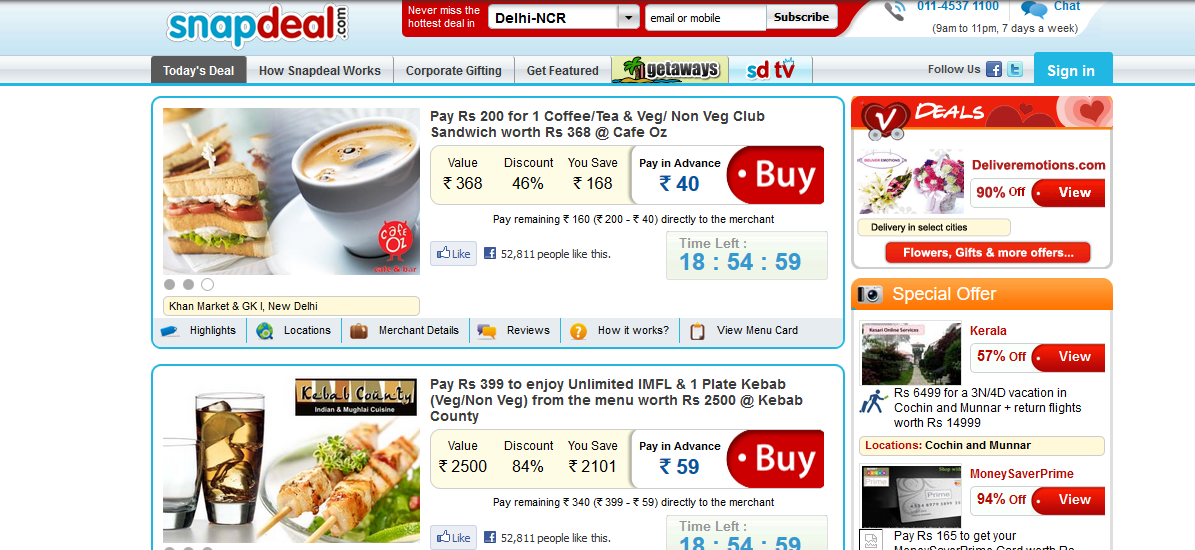Paypal – Say No To Traditional Payment Methods
 Online transaction is a boon in our everyday life. It has made our life better by saving us time and making transactions by a few clicks. One does not need to run to the bank or ATM in the eleventh hour for withdrawing cash. Applications like GooglePay, PhonePe have become some of the most popular interfaces for money transactions. But, way before these applications came into play, an American company, PayPal ruled the market.
Online transaction is a boon in our everyday life. It has made our life better by saving us time and making transactions by a few clicks. One does not need to run to the bank or ATM in the eleventh hour for withdrawing cash. Applications like GooglePay, PhonePe have become some of the most popular interfaces for money transactions. But, way before these applications came into play, an American company, PayPal ruled the market.
Founded in 1998, PayPal serves the entire world with its payment services. It was a subsidiary of eBay for a long time. PayPal has launched many divisions of online payment in the last twenty years. The founders of the company are Elon Musk, Ken Howery, Luke Nosek, Max Levchin, Peter Thiel and Yu Pan. Currently, Dan Schulman serves as the President and CEO of the company. The company’s headquarters is based in San Jose, California.
Founders
The world-famous tech pro, investor and entrepreneur, Elon Musk founded more than just one company. PayPal was his third start-up after co-founding Zip2 with his brother, Kimbal followed by founding X.com. Musk founded SpaceX, The Boring Company, Neuralink, and many more giant businesses.
Howery went to Stanford University and acquired a Bachelor’s degree in Economics. While he was a university student, he served as the managing editor of The Standard Review. Howery co-founded PayPal the very year he graduated. He was made Director of corporate development for eBay after it acquired PayPal.
Nosek is a computer engineer who co-founded SponsorNet New Media prior to co-founding PayPal. He served as PayPal’s vice president of marketing and strategy until the company was acquired by eBay.
Levchin has a degree in computer science who co-founded PayPal right after completing his graduation. He has also co-founded Slide, HVF, and Affirm. Levchin is mostly known for his efforts in managing fraud and contributions in CAPTCHA response.
The great venture capitalist and investor, Peter Thiel has a degree in law from Stanford. Before becoming a venture capitalist, Thiel served as a security lawyer. Thiel is a board member of Facebook, a partner at Founders Fund and a great philanthropist.
Pan has a degree in computer science from the University of Illinois. Pan served as a Google employee prior to co-founding PayPal. He was also hired by Youtube as a software engineer.
Early History
Back in 1998, the company was launched by the name Confinity. Confinity was founded to provide security software which later launched its money transfer service in 1999. BlueRun Ventures provided the initial funding for this new company.
After a year, Confinity merged with X.com, Musk’s online banking start-up. X.com had many other online payment services which Musk decided to shut down and focus exclusively on PayPal. In 2001, the company gained popularity as PayPal and not X.com anymore. It went public in 2002.
The major acquisition
In 3rd October 2002, eBay acquired PayPal for $1.5 billion. It was the biggest turning point in the success story of PayPal. After this business deal was closed, PayPal payments increased exponentially. Most of the eBay users paid through PayPal as it appeared as the default choice. Five years from buying PayPal, the company’s annual revenue summed up to $1.8 billion. In 2008, PayPal made two big acquisitions including Fraud Science (for managing frauds) and Bill Me Later.
Success of PayPal
The company reached 100 million active users from more than twenty-five different countries by 2010. Till now PayPal only provided online money transactions. In 2011, the company decided to provide offline services. The company wanted to deliver the advantage of paying in retail shops via PayPal. For launching this, PayPal came into a partnership with Discover Card in 2012. After the offline scheme was launched, it reached more than 7 million retail shops. This led the volume of PayPal’s payment transaction to $145 billion.
An independent company
In 2014, the company decided to establish itself independently. The spin-off was finally completed on 18th July 2015. After this agreement, Dan Schulman was made the CEO and President of the company and John Donahoe was declared as the Chairman.
he first acquisition made by PayPal as an independent entity was Xoom Corporation. Other acquisitions also include Hyperwallet, Simility, and GoPay, etc. The company today has more than 170 million active users and 21,000 employees approximately.

Annasha Dey is an NIT student, who apart from studying engineering is also a content writer. She has a great interest in photography, writing, reading novels, and travelling as well. She is a foodie who loves socializing and hanging out with her friends. She is also a trained Kathak dancer and a big fashion enthusiast. Dey also loves watching TV series, which includes F.R.I.E.N.D.S. and Big Bang Theory. To be a better writer she prefers to read more




